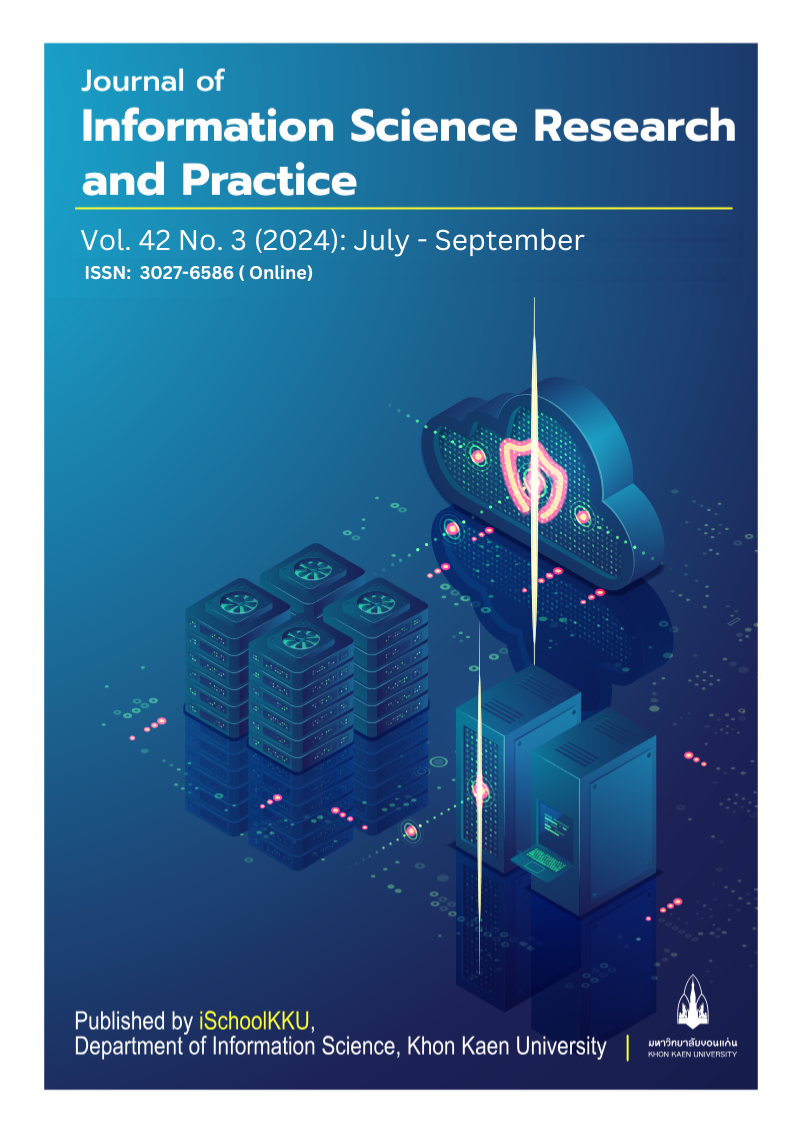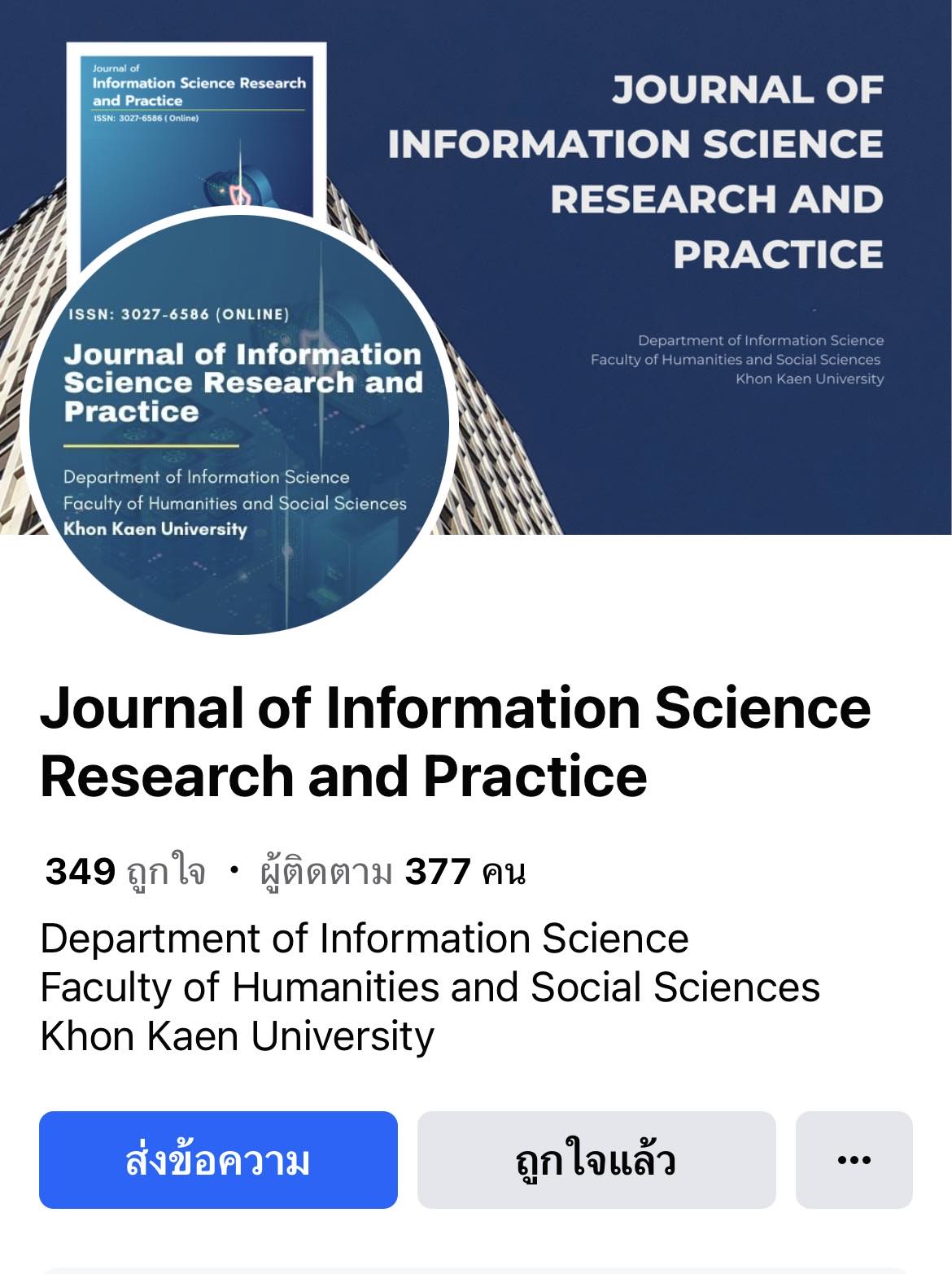Analyzing the Geospatial Dimensions of Crime in Thailand
DOI:
https://doi.org/10.14456/jiskku.2024.21Keywords:
Crime against life, Spatial statistics, Spatial analysis, Hot spot, Geographic information system, ThailandAbstract
Purposes: To study the crime rate of offenses against life, body, and sexual integrity in Thailand, and to analyze the spatial relationship patterns of these crimes from 2017 to 2021.
Methodology: Secondary data on crime incidents was nationally collected to study the crime patterns of crimes against life, body and sex in Thailand using Geographic Information System (GIS) software. Geostatistical analysis was performed using Moran's I and Getis-Ord Gi* to identify hot spots of crime In Thailand.
Findings: Crimes against life, body and sex in Thailand showed a decreasing trend over the five-year period from 2017 to 2021. However, in 2021, the spatial distribution of these crimes showed a high clustering pattern in the central and southern regions of Thailand. The most common type of crime was assault, while the least common type was murder.
Application of the study: This study provides a framework for studying crime prevention and finding solutions to crimes against life, body and sex in different parts of Thailand. It also serves as a basis for further research on the factors influencing these crimes.
Downloads
References
Achu, A., & Rose, R. (2016). GIS analysis of crime incidence and spatial variation in Thiruvananthapuram city. International Journal of Remote Sensing Applications, 6(0), 1. https://doi.org/10.14355/ijrsa.2016.06.001
Bank of Thailand. (2023). Forecast summary as of 12 June 2024. (In Thai). Retrieved from https://www.bot.or.th/th/thai-economy/economic-outlook.html
Bunnarong, B. (2019). An analysis of fundamental offence of bodily harm. Master thesis, Chulalongkorn University.
Chaemsuwanwong, A. (2003). Forensic science 1 for crime investigation. (In Thai). (Vol. 4). Bangkok: TCG printing.
Chainey, S., & Ratcliffe, J. (2013). GIS and crime mapping. John Wiley & Sons.
Geoinformatics Research Center for Thailand. Learning GIS. Retrieved from https://www.gisthai.org/about-gis/gis.html
Getis, A., & Ord, J. K. (1992). The analysis of spatial association by use of distance statistics. Geographical Analysis, 24(3), 189-206. https://doi.org/10.1111/j.1538-4632.1992.tb00261.x
John, M., Goodchild, M. F., & Longley, P. (2007). Geospatial analysis : a comprehensive guide to principles, techniques and software tools. Leicester, U.K.: Matador.
Mitchell, A., & Griffin, L. S. (2020). The Esri Guide to GIS Analysis, Volume 2. ESRI Press.
Humanitarian Data Exchange. (2022). Thailand - subnational administrative boundaries. Retrieved from https://data.humdata.org/dataset/cod-ab-tha
Jonathan, O. E., Olusola, A. J., Bernadin, T. C. A., & Inoussa, T. M. (2021). Impacts of crime on socio-economic development. Mediterranean Journal of Social Sciences, 12(5), 71. https://doi.org/10.36941/mjss-2021-0045
Luenam, A., & Puttanapong, N. (2019). Spatial and statistical analysis of leptospirosis In Thailand from 2013 to 2015. Geospatial Health, 14(1). https://doi.org/10.4081/gh.2019.739
Montien-art, S., & Hemwan, P. (2020). Crime predictive model in chang phueak police station neighborhood, Chiang Mai province. Defence Technology Academic Journal, 2(4), 32-41.
National Statistical Office. (2021a). Atchayakam læ khwamphit thi to ong rap thot thang aya [Crimes and offenses punishable by criminal penalties]. (In Thai). Retrieved from http://statbbi.nso.go.th/staticreport/page/sector/th/09.aspx
National Statistical Office. (2021b). Sathiti khadi aya praphet khwamphit kieokap chiwit rangkai læ phet chamnek tam praphet khwamphit yek tam changwat pi songphanharoihoksip - songphanharoihoksipsi [Statistics on criminal cases for crimes related to life, body, and sex, classified by type of offense by province, 2017 - 2021]. (In Thai). Retrieved from http://statbbi.nso.go.th/staticreport/page/sector/th/09.aspx
Niti Thammalai Institute. (2017). Laksana kao khwamphit kieokap phet [Section 9: Sexual Offences]. (In Thai). Retrieved from https://www.drthawip.com/criminalcode/1-40
Office of Justice Affairs. (2022). Updating Thai Criminal Justice 2022. Bangkok: Office of Justice Affairs.
Raksakitkosol, N. (2020). Guidelines for the prevention and suppression of crime For solving social problems. Journal of Roi Kaensarn Academi, 5(1), 1-16.
Rattananvorasawet, P. (2020). Analysis of crime risk areas with Geographic Information System. Chandrakasem Rajabhat University Journal of Graduate School, 15.
Rayejian Asli, M. (2013). Introducing general theory of victimology in criminal sciences. The International Journal of Humanities, 20(3), 53-79.
Registration Management Office. (2022). Sathiti prachakon thangkan thabian ratsadon [Official population statistics from the civil registration]. (In Thai). Retrieved from https://stat.bora.dopa.go.th/stat/statnew/statMONTH/statmonth/#/displayData
Ristea, A., & Leitner, M. (2020). Urban crime mapping and analysis using GIS. ISPRS International Journal of Geo-Information, 9(9), 511. https://doi.org/10.3390/ijgi9090511
Ruankham, W., Nugprachaya, O., & Daoming, W. (2020). Does the sectoral economic growth lower the poverty incidence: additional evidence from Thailand. Suthiparithat Journal, 34(112), 39-60.
Seema, S. (2020). Botbat nitiwitthayasat kap krabuankan yuttham [The role of forensic science in the justice process]. (In Thai). Retrieved from https://library.parliament.go.th/th/radioscript/bthbathnitiwithyasastrkabkrabwnkaryutithrrm
Semprevivo, L. K., & Hawdon, J. (2021). Research on victimization and victimology. The Encyclopedia of Research Methods in Criminology and Criminal Justice, 2, 732-737.








